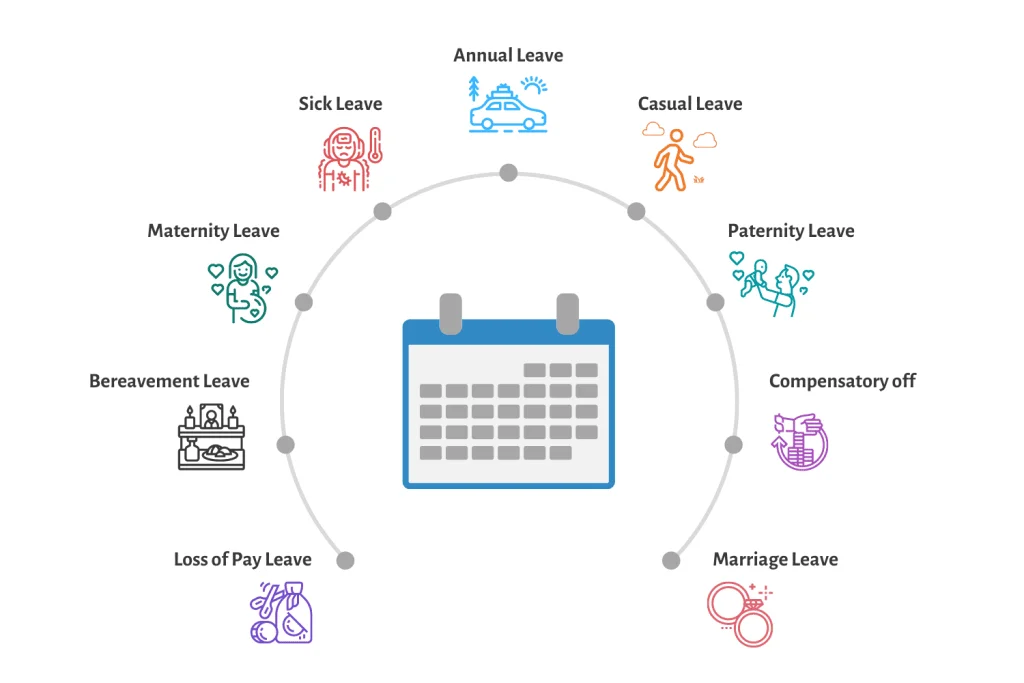In the spectrum of workplace benefits, paid time off matters more than any other. All employees want more time off than what their job allows. If they don’t, they wouldn’t be taking less PTO (paid time off) than they could.
How can an employer increase paid time off? One way is to better educate employees about the different types of leave.
If you’re confused about different leave types, you’ve come to the right place! Here’s all you need to know about taking time off from work.
Paid Time Off (PTO)
Paid Time Off, commonly known as PTO, is a leave option that combines vacation, sick leave, and personal days into a single bank of days. This form of paid leave allows employees to use their allocated PTO days for various purposes, such as:
- taking a vacation
- recovering from illness
- attending medical appointments
- simply enjoying a personal day
PTO provides employees with flexibility and autonomy over how they use their time away from work, making it a valuable benefit.
Vacation Leave
Vacation leave is perhaps the most well-known type of leave. It offers employees the opportunity to take a break from work and rejuvenate by spending time with family, exploring new places, or pursuing hobbies and interests.
Vacation leave is essential for maintaining a healthy work-life balance, reducing stress, and preventing burnout. With the help of leave management software, employers often provide a specific number of paid vacation days each year.
Sick Leave
Sick leave is designed to provide employees with paid time off when they are unwell and unable to perform their job duties. Employees must have access to sick leave to ensure they can prioritize their health without financial repercussions.
Many employers offer a specific number of sick days each year, which can also be used for medical appointments or caring for a sick family member.
Maternity and Paternity Leave
Maternity and paternity leave are specific types of leave designed to support new parents during the birth or adoption of a child. Maternity leave is typically available to biological mothers, while paternity leave is for fathers or non-birthing parents.
These enable parents to bond with their newborns, recover from childbirth, and adjust to the demands of parenthood. The duration and pay for maternity and paternity leave vary widely depending on the country, state, and employer policies.
Bereavement Leave
Bereavement leave, also known as compassionate leave, is granted to employees who have experienced the loss of a close family member or loved one. It offers employees the necessary time to grieve, attend funerals, and handle important matters following a death. While bereavement leave is usually a short-term leave, it provides crucial support during a difficult time.
Jury Duty Leave
Jury duty leave is a type of leave granted to employees who are summoned to serve on a jury. This leave ensures that employees can fulfill their civic duty without fear of losing their job or income. Employers may provide full or partial pay during jury duty leave, depending on their policies.
Know the Types of Leave and the Importance of Taking Time Away
Time away matters! After learning about the various types of leave available to employees, it’s clear that taking time away from work can be beneficial in many different ways. From parental leave to personal leave, there is no one-size-fits-all approach. Take the time to explore what works best for your situation.
Don’t forget to discuss your needs with your employer if you’re considering taking a leave.
If you are looking for other articles like this, please visit the rest of our website today.










